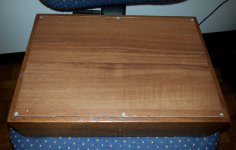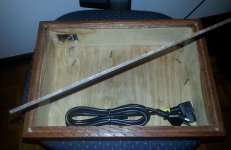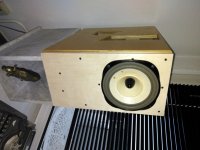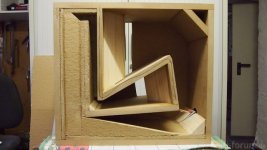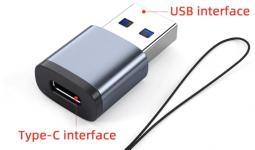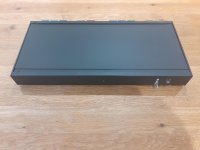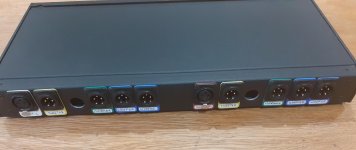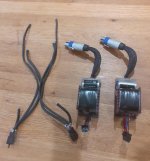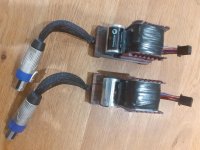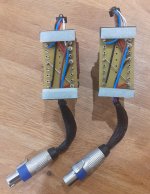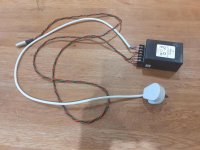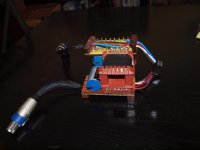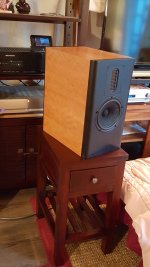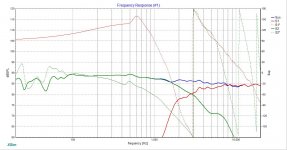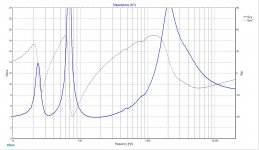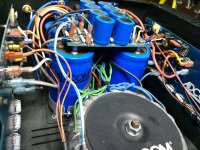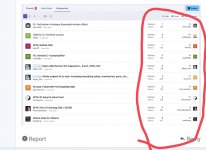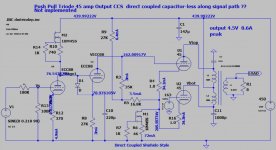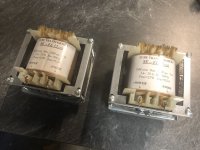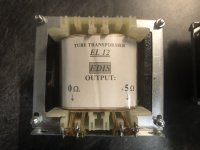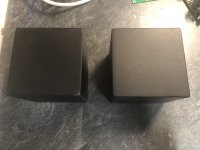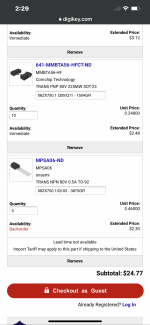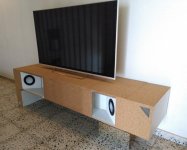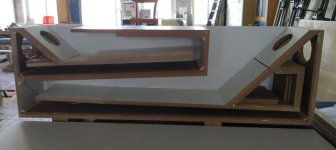Time for a new amp! Some time ago, I started with a project, that got a bit out of hand. In the background, I'm still working on it, but with all the new ideas for that amp, the pile of unused components started growing: chassis, PSU boards + caps, transformer, DAC and volume control. So why not use those parts and make an amplifier out of it? This time keeping it simple.
Chassis:
Ebay / AliExpress "2515 Aluminium Amplifier Enclosure"
Inrush limiter:
2x 5 Ohm NTC resistor in series
Nothing fancy, but it works just fine
Transformer:
Amplimo 300VA - 2x22V
Amplimo 15VA - 2x12V (for DAC PSU)
Power Supplies:
Audiosector - RECT-PCB
MUR860 diodes
22.000uF caps + bleeder resistors (just two 8.2kOhm 1/2W resistors in in parallel)
No snubber
Amplifier:
Neurochrome LM3886DR
DAC:
Ebay / AliExpress: CS8416+PCM179
4 24bit/192kHz DAC
Volume control:
Valab 23 steps - 20k
Binding posts:
Sourced from Neurochrome
Cabling:
-Whatever was available in the drawer, mostly Lapp / Ölflex cables:
230VAC circuit: 1mm^2 (orange)
22VAC circuit: 1mm^2 (colours same as Amplimo: red, blue, yellow, grey)
DC circuit: 2.5mm^2 (black)
LM3886DR to terminals: 4mm^2 (black/red)
Notes
A. 4mm^2 would have been better for the DC circuits, but with the tight space, the 2.5 offers a bit more flex.
B.
Solder:
60/40, nothing special here
================================================================
Project "points of attention"
Volume control:
The DAC has a 2V RMS output, while the LM3886DR boards have an input sensitivity of 950mV RMS. In other words: the last few steps of the attenuator will drive the LM3886 into clipping. Not the highest priority at the moment.
DAC PSU:
These kits have been circling around for a long time now, "back in the day", the first versions where built with 7805/7812/7912 voltage regulators. Not the best option when it comes to PSRR. A Dutch guy built a LM317/LM337 based PSU, achieving a significant reduction in noise, more details here (in Dutch, with pictures, schematics and measurements):
click here
The DAC I bought has LM317/337 regulators, but I haven't reversed engineered the schematics. Depending on how well the newer PSU is done, it might be rewarding to do a PSU upgrade later on in the process.
DAC Opamps:
Default: AD827
Possible upgrade options: LM4562 or LME49720 (
click)
Update 05-DEC-2021: LM4562 ordered, on the Dutch forum they are regarded as a good drop-in replacement. The LME49720 had availability issues anyway, and reading trough the referred thread, the internals and performance specs seem to be the same.
DAC mods:
Multiple well known mods are circling around the internet for this DAC. I'm not the type the type that determines improvements by listening, I rather heave measurements (on of the reasons I like Neurochrome so much). Example mods:
Modded Hong Kong DAC
================================================================
Pictures:
Note: something seems to be off with picture size ratio's, all pictures are clickable, showing them with the correct aspect ratio.
Rough estimate for the layout
 Rear panel, work in progress
Rear panel, work in progress
-Each toroid will be fused separately
-Power switch is on the rear, two reason: 1. I wanted to keep the front as clean as possible and 2. the chassis is tight, doing it this way avoids running 230VAC cables trough the entire cabinet.
 DAC + PSU stack
DAC + PSU stack
-With of the boards = same
-Length of PCB = not the same, bummer
 Added 05-DEC-2021 - PSU boards:
Added 05-DEC-2021 - PSU boards:
Personal note: they are very, very compact, compliments to that! One of my design ideas was to avoid hardwiring where possible. The spacing on the PCB is standard 5.08mm and lucky me, I had some screw terminals laying around. One setback: the screw terminals do interfere with the diode's. After slightly modifying a screw terminal and raising the diodes a bit, it all fitted.
First soldering all parts on one side, then cleaning the solder joints, then mounting the caps with enough clearance and cleaning again. To be honest: not the most user friendly method. Aside from that, the solder joints become a "stressed" member.
And yes, I know not all diodes look the same. All are MUR860, functionally all the same, only difference is the isolated/non-isolated. Just a mistake while ordering for this project and saved by some diodes laying around for another project.
*picture taken before cleaning PCB topside after soldering the caps in.

